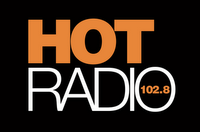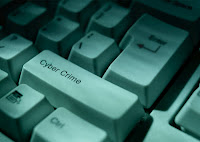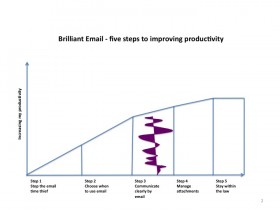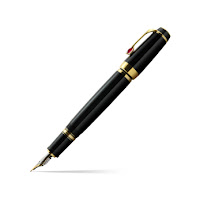Top tips from Mesmo Consultancy (and Associates) on how to save time and improve business and personal performance by ‘Taking Control of your Inbox’ and using proper business email etiquette.
You receive an Out of Office Message, what is your natural reaction next time you want to email that person? Aside from a touch of jealousy as they are on leave and have escaped the daily dose of email overload, you just send them another email.
Is that the best email behaviour for those serious about stopping email overload and reducing the resulting wanton waste of time (estimated now to be half a day week).
One in five business users now receive in excess of seventy email a day. Yet our own and that of others research shows that less than a third of all incoming email is ever read. Take a week off and there will be at least 350 emails waiting for you.
 | ||
| My notebooks from our sponsor BomoArt |
There is a very high chance that your email will either be missed or redundant by the time its read. However the recipient may not know that and so more unecessary emails flood back into your inbox.
Be innovative. Don’t firing of more emails. Instead write down the things you want to email the person about and either send them one email on their return or and better still talk to them.
Now watch the email traffic go down along with the email overload. You might even find you too reach the empty inbox status more quickly.
This is part of an ongoing series of notebook stories to reduce email overload – see also my recent column in TechRepublic.
Dr Monica Seeley, founder of Mesmo Consultancy has spent the last fifteen years coaching and training people from a wide range of organisations and businesses to use email more effectively to improve personal and business performance and manage the risk associated with cyber crime. Monica is a Visiting Senior Fellow at Cass Business School City University and Bournemouth University Business School. She is passionate about helping people to save time by using email effectively and has written several books on the subject, the latest being Brilliant Email. She runs regular workshops,webinars and masterclasses on email best practice.
Tags: email management training, email overload, empty inbox, inbox zero, notebook stories, out-of-office messages

The title of this blog might seem at odds in this age of social media and sharing. However there is sharing and sharing and especially when travelling. Cyber crime now costs organisations more than physical crime. That is data lost through inappropriate use of electronic devices, email and the internet.
Travelling is stressful enough and to lose your ipad just adds to the hassle. Heathrow has been nicknamed ‘Theifrow’. When you look around it’s easy to see how we make it easy for the cyber criminal.
Travelling to a client last week revealed several weak spots which would make it very easy for me to walk off with both highly confidential competitive information and sensitive personal data.
Whether you travel on business or for pleasure here are seven top tips to protect yourself from cyber crime in its various forms.
 |
| Cyber crime |
For more about how to manage the risks related to email security see last month’s interview notes.
This is a summary of Monica Seeley’s regular slot on the Geoff Carter show on Hotradio.
Its Green Office Week this week and stopping email overload is one way to make a very significant contribution to reducing your carbon foot print.
 |
| Green Email Usage |
If your office and desk space was awash with papers you wouldn’t just go and ask for a new desk/larger office. You would be forced to clear up. Yet with email most people tend to ignore the warnings about mailbox sizes. Old emails are simply moved to another destination (for Outlook users often a pst file) and the inbox allowed to overflow again.
Unlike paper we can not see our emails, but make no mistake the more emails the more energy needed to process them. Even if you opt for email archiving to reduce the storage requirements, servers and energy is still needed to process them.
The main suppliers of email like Google, Microsoft and BT all promote large inboxes as an advantage. In my book this is amoral as it increases our carbon foot print and encourgaes email overload. It’s akin to the banks lending to people who could not aford to repay the loan. Instead of promoting bloated inboxes, responsible email providers should be promoting and rewarding those who downsize and maintain small sustainable inboxes.
Many business are now downsizing their office space to reduce overheads and be more sustainable. We should be doing the same with email to reduce our carbon foot prints. For example, reduce the volume of traffic through our inbox by reducing the number of emails chains, better email etiquette, sharing rather than sending the complete file.
During the week I will tweet more tips on how going green can also help you stop email overload.
Tags: BT, email chains, email etiquette, email overload, empty inbox, green office week, Microsoft
 |
| From Brilliant Email by Monica Seeley, Pearson, 2010 |
Can email etiquette help stop email overload and enable you to reach inbox zero status? In my book Brilliant Email, email etiquette is identified as step 3 for improving productivity – see diagram opposite.
Like any form of communication, it is about conveying the right message right first time and know when to stop the conversation and move on. In a previous blog I wrote about the importance of good grammar and spelling.
How often in an email do we leave ourselves open for the recipient to send a reply which adds little or nothing to the communication but means that out of courtesy we must reply again?
Take a look at the email chains in your inbox and I’ll bet you have quite a few which could have been terminated much earlier. For example, when you ask someone for information, to do something etc. There are often two or three quite unnecessary rounds of email ping pong as you each play what I call the ’email thank you game’.
Recipient – Yes OK will do.
Sender – Thank you.
Recipient – That’s OK.
Sender – By the way can it be done by 12.00 noon?
Recipient – Yes.
Sender – Thanks.
Etiquette suggest that we say thank you. But how about using brilliant email etiquette to reduce the number of rounds of the email thank you game and hence stop email overload.
Here is what I would say in my email as the sender.
Sender – Please can you do X and if possible by noon today. Many thanks for your help.
Recipient – Yes.
End of the email chain and a chance to reach inbox zero status more quickly.
For more ways to save time and reduce email overload by using an alternative medium why not come on one of our Brilliant Email masterclasses or webinars?
What email etiquette do you use to be courteous yet reduce the rounds of the email thank you game?
Tags: email communications, email etiquette, email overload, inbox zero
Brilliant Email Etiquette Checklist
 |
| Good email etiquette |
How good is your email etiquette? Will it help you stop email overload and reach inbox zero or drive up the email traffic in your inbox? Recipients are far more likely to respond to emails which are easy to read and indicate clearly what is expected of them.
Use this checklist to score the clarity of your emails and establish how well they will be received by the recipient.
Scoring: 1= Poor 2= OK but could be improved 3= Brilliant, it fully meets the criteria.
1. Subject line. Does the subject-line reflect the content of the email and if action is required, by when?
2. Tone. Is it professional and business like without being cold and distant?
3. Grammar and spelling. Are there any spelling or grammatical errors?
4. Structure and layout. Have you stated the key facts at the start and separated each new topic/point?
5. Wording. Is it written in plain clear English and free of jargon and text-speak?
6. Font. Have you used a consistent business-like font and colour?
7. Call to action. Does the email explain clearly what the recipient needs to do next?
Interpreting your score
7 = Poor. Don’t be surprised if there is either no response from the recipient or they fail to notice your email. Go and read Part 3 of Brilliant Email.
8 to 14 = OK. However there is room for improvement – go back and read Part 3 of Brilliant Email.
15 to 21 = Good. You are on your way to writing brilliant emails which should be read (and, as appropriate, dealt with) promptly.
For more help with your email etiquette either read Brilliant Email by Monica Seeley.
Alternatively, come to one of our Brilliant Email Master Classes. For more information see either www.mesmo.co.uk or www.brilliant-email.com or contact Susan Oakes by email: info@mesmo.co.uk and phone: +44 (0)1202 43 43 40
Tags: email communications, email etiquette, email etiquette training, email sign off, email subject line